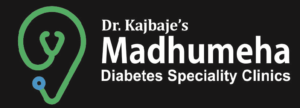Hypertension Detection
Early Detection of Hypertension: Why It Matters and How to Take Action
Hypertension, commonly known as high blood pressure, affects millions of people worldwide and is a major risk factor for cardiovascular diseases. Detecting hypertension at an early stage is crucial for effective management and prevention of related complications. In this article, we will explore the importance of early detection, methods for identifying hypertension, and the actions that can be taken after detection.
Introduction to Early Detection of Hypertension
Hypertension refers to elevated blood pressure levels that persist over time. It often remains undiagnosed until it reaches an advanced stage, resulting in severe health consequences. Early detection involves identifying high blood pressure before it causes significant damage to the body.
Importance of Early Detection
Detecting hypertension early offers several benefits. Firstly, it allows for timely intervention to prevent or minimize the development of complications. Secondly, early detection provides an opportunity for lifestyle modifications and non-pharmacological interventions, which can help manage blood pressure levels effectively. Lastly, it enables healthcare providers to monitor individuals closely and adjust treatment plans as needed, improving long-term health outcomes.
Understanding Hypertension
Definition and Prevalence
Hypertension is defined as having a systolic blood pressure of 130 mmHg or higher and/or a diastolic blood pressure of 80 mmHg or higher. It is a prevalent condition globally, affecting individuals across different age groups and demographics.
Risk Factors and Symptoms
Several risk factors contribute to the development of hypertension, including age, genetics, obesity, sedentary lifestyle, tobacco use, and excessive salt intake. While hypertension is often asymptomatic in the early stages, some individuals may experience symptoms such as headaches, dizziness, and blurred vision.
Methods for Early Detection
Regular Blood Pressure Monitoring
Regular blood pressure monitoring is a fundamental method for early detection. It involves measuring blood pressure at home or during routine healthcare visits using a sphygmomanometer or an electronic blood pressure monitor. By tracking blood pressure readings over time, individuals and healthcare professionals can identify patterns and detect hypertension early.
Diagnostic Tests and Screenings
Diagnostic tests and screenings are additional tools for early detection. These may include blood tests to assess cholesterol and glucose levels, urine tests to evaluate kidney function, and electrocardiograms (ECGs) to check for heart abnormalities. Screening programs and health check-ups can also play a significant role in identifying hypertension in individuals who may not present with obvious symptoms.
Actions after Early Detection
After early detection of hypertension, various actions can be taken to manage and control blood pressure effectively.
Lifestyle Modifications
Lifestyle modifications form the cornerstone of hypertension management. These include adopting a healthy diet, reducing sodium intake, engaging in regular physical activity, maintaining a healthy weight, limiting alcohol consumption, and quitting smoking. Making these changes can help lower blood pressure and reduce the risk of cardiovascular complications.
Medication and Treatment
In some cases, lifestyle modifications alone may not be sufficient, and medication may be required to control blood pressure. Healthcare professionals may prescribe antihypertensive medications, such as diuretics, beta-blockers, ACE inhibitors, or calcium channel blockers, based on the individual’s specific needs and health condition.
Regular Check-ups and Monitoring
After the initiation of treatment, regular check-ups and monitoring are essential. Healthcare providers will monitor blood pressure, assess medication effectiveness, and adjust treatment plans as necessary. These follow-up visits help ensure that blood pressure remains under control and reduce the risk of complications associated with hypertension.
Conclusion
Early detection of hypertension is crucial for preventing complications and managing blood pressure effectively. Regular blood pressure monitoring, diagnostic tests, and screenings play a pivotal role in identifying hypertension early. By taking prompt action, such as making lifestyle modifications and following prescribed treatments, individuals can mitigate the risks associated with hypertension and improve their long-term health outcomes.
FAQs
Q1. Can hypertension be detected without measuring blood pressure?
While blood pressure measurement is the primary method for detecting hypertension, additional diagnostic tests and screenings can provide valuable insights into an individual’s overall cardiovascular health.
Q2. Can lifestyle changes alone manage hypertension?
Lifestyle modifications, such as adopting a healthy diet, exercising regularly, and reducing stress, can effectively manage blood pressure in many cases. However, medication may be necessary for some individuals depending on the severity of hypertension and other underlying health conditions.
Q3. Is hypertension a reversible condition?
While hypertension is generally a chronic condition, early detection and appropriate management can help control blood pressure and reduce the risk of complications. With the right interventions, individuals can lead a healthy and fulfilling life.
Q4. How often should blood pressure be monitored after early detection?
The frequency of blood pressure monitoring may vary depending on individual circumstances. Generally, it is recommended to monitor blood pressure at regular intervals as advised by a healthcare professional.
Q5. Can hypertension be cured completely?
Hypertension is a chronic condition, but it can be effectively managed with appropriate lifestyle modifications, medication, and regular healthcare follow-ups. With consistent efforts, individuals can achieve and maintain healthy blood pressure levels.
